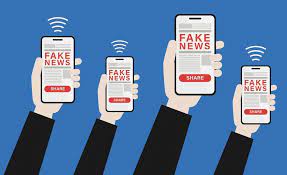Introduction
In a digital age where information is readily accessible, the insidious phenomenon of disinformation has taken center stage. This article explores the profound impact of technology on the proliferation of disinformation campaigns, delving into historical contexts, the rise of digital platforms, the role of artificial intelligence, and the consequential cybersecurity challenges.
Historical Context
The roots of disinformation can be traced back through history, but its evolution has accelerated with technological advancements. Early instances of misleading narratives paved the way for more sophisticated methods, with technology acting as a catalyst for the dissemination of false information.
Impact of Digital Platforms
The advent of the internet and social media has transformed the landscape of information sharing. Digital platforms serve as breeding grounds for disinformation, where false narratives can quickly gain traction and influence public opinion.
AI and Disinformation
Automated systems powered by artificial intelligence play a pivotal role in spreading disinformation. From targeted misinformation campaigns to the creation of hyper-realistic deepfakes, technology has become a formidable tool in the hands of those seeking to manipulate the truth.
Mechanisms Used for Disinformation
Bots and troll farms operate with precision, amplifying disinformation and creating artificial trends. Understanding the mechanisms behind these tactics is crucial to developing effective countermeasures.
Cybersecurity Challenges
Protecting against disinformation is not only a matter of identifying false information but also safeguarding information integrity. Technological solutions are imperative in the ongoing battle
Exploiting Cognitive Biases
Disinformation leverages cognitive biases, preying on human psychology to shape perceptions and beliefs. The use of technology in psychological warfare amplifies the effectiveness of these manipulative strategies.
Regulatory Measures
Global efforts to curb disinformation involve regulatory measures, but the implementation of such measures faces challenges. Striking a balance between free speech and preventing the spread of false information remains an ongoing struggle.
Media Literacy Programs
Empowering individuals to discern between reliable and misleading information is a crucial aspect of combating disinformation. Media literacy programs play a vital role in arming the public with the skills needed to navigate the digital information landscape.
Case Studies
Exploring notable instances of technology-fueled disinformation campaigns provides insights into the profound impact on societal dynamics. Analyzing these cases highlights the urgency of addressing the technological dimensions of disinformation.
Balancing Freedom of Speech
As technology evolves, ethical considerations surrounding the balance between freedom of speech and combatting disinformation become increasingly complex. Tech companies bear a responsibility to navigate this delicate equilibrium.
The Role of Individuals
Citizen journalism, fact-checking, and active engagement by individuals are pivotal in building a resilient society against disinformation. Empowering individuals to be critical consumers of information is a collective defense against manipulation.
Anticipated Developments
Examining future trends in disinformation technologies allows us to proactively develop strategies for mitigation. Staying ahead of evolving tactics is essential for a robust defense against the ever-changing landscape of information warfare.
Conclusion
In conclusion, the intertwining of technology and disinformation poses a significant challenge to our information ecosystem. Recognizing the role of technology in both perpetuating and combating disinformation is essential. A collaborative approach, involving individuals, tech companies, and policymakers, is imperative to secure a resilient and informed society.
FAQs
What is the primary motive behind disinformation campaigns?
Disinformation campaigns often aim to manipulate public opinion, sow discord, or achieve political or economic objectives.
How can individuals identify false information online?
Critical thinking, fact-checking, and media literacy are key tools for individuals to discern and identify false information.
Are there legal consequences for engaging in disinformation?
Legal consequences vary by jurisdiction, but spreading false information with malicious intent can lead to legal repercussions.
What role do social media algorithms play in spreading disinformation?
Social media algorithms can inadvertently amplify disinformation by promoting sensational content, contributing to its rapid spread.



